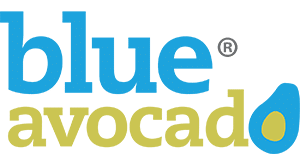Nonprofit Tax Quiz
In the nonprofit sector we throw around tax opinions, but here’s a chance to learn something from a 17-question quiz.

Test your nonprofit tax knowledge.
Everyone talks about the weather, but how many of us actually know what a lenticular cloud is or what the dew point means? In the nonprofit sector we throw around tax opinions, but here’s a chance to learn something (uh oh). We loved working with Kim Klein on this fun quiz.
We advise you to take this 17-question quiz with your friends or co-workers before looking at the answer sheet.
You’ll find the answer sheet and the scoring guide at the end of this article.
The entire quiz and answer sheet is below, but you can also download a PDF version of this quiz.
1. If you give a nonprofit 501(c)(3) $10,000, how much less will you pay in federal taxes (assuming you itemize and are in the highest tax bracket)?
- a. $10,000
- b. $3,500
- c. $1,500
- d. $10,000, but only if you get a receipt within 60 days of the donation
2. In a group of ten people, seven of them filed the short tax form, and three filed the long form. All ten of them gave to a nonprofit. How many of them will reduce their taxes as a result of their donations?
- a. Five. The other five gave their money to churches or religious institutions, and giving to religion is not deductible because of separation of church and state.
- b. All ten — that’s only fair.
- c. Only the group of three. The other 7 are part of the 70% of Americans who file a short form, so they receive no tax benefit for their giving.
- d. Eleven of them. One is filing two tax returns under different names.
3. Which of the following paid the least in U.S. taxes for 2010?
- a. You
- b. Sierra Club
- c. General Electric (net profit $14.2 billion)
- d. Willie Nelson
4. If you die and leave your son an estate of $3 million, how much in estate taxes (also called inheritance taxes) will be owed on the $3 million in income he is given?
- a. $0
- b. 15% which calculates to $450,000
- c. 35% which calculates to $1.05 million
- d. 15% on real estate inherited and 35% on non-real estate inheritance assets
5. Who said the following: “The estate tax — our nation’s only levy on accumulated wealth — is the fairest and most important tax we have”?
- a. Karl Marx
- b. Theodore Roosevelt
- c. Bill Gates, Sr.
- d. Pope Paul VI
- e. Thomas Jefferson
6. A “progressive tax structure” means:
- a. It is supported by “progressive” people.
- b. It is part of Obamacare.
- c. People with higher incomes pay a higher percentage in taxes than people with lower incomes.
- d. Taxes increase with inflation.
7. In the United States, if you live in a household with a total gross household income of $250,000 or more, what percentage of U.S. households have less income than yours?
- a. 98%
- b. 70%
- c. 40%
- d. 32%
8. If Michael, an attorney whose billing rate is $300 per hour, donates 3 hours of legal counseling to a nonprofit, how much can he deduct from his taxable income?
- a. $0
- b. 15% = $126 ($300 * 3 = 900, then 14% of 900 is $126)
- c. $900 if he itemizes
- d. Three hours at the average attorney billing rate in his state
9. Which of the following is legally a restriction on 501(c)(3) nonprofits:
- a. Nonprofit staff cannot donate blood.
- b. Nonprofits cannot borrow money, except from board members and staff.
- c. Nonprofit board meetings must be open to the public.
- d. Nonprofits cannot divvy up the surplus at year-end and distribute it to staff.
- e. b and c
10. If you buy $20 worth of raffle tickets (for a new car) from a nonprofit as a fundraiser, you can:
- a. Deduct $20 from your taxable income.
- b. Deduct between 15% and 35% of the $20 from your taxable income depending on your tax bracket.
- c. You can deduct only if the ticket says, “Donation requested” and indicates how you can get the tickets for free.
- d. $20, but only if you win the car.
11. True/False: Thank-you notes to donors are required by law.
- a. True
- b. False, but you must send a receipt (acknowledgment letter) to a donor for any donation of $75 or more.
- c. False, but you must send a receipt (acknowledgment letter) to a donor for any donation of $250 or more
- d. Thank-you notes are only required for donors who are intending to list the donation on their tax returns.
12. To be officially poor according to the federal government, a family of four can have a total annual income of no higher than:
- a. $22,350
- b. $31,700
- c. $42,000
- d. the salary of the governor of Wyoming.
13. Median household (not individual) income: you live in a household that makes more money per year than 50% of American households. Your total household income is:
- a. $31,000
- b. $48,000
- c. $94,000
- d. More than Scrooge McDuck makes in a year.
14. If you paid $10,000 last year in federal income taxes, how many of your tax dollars went to conservation and the environment?
- a. $100
- b. $120
- c. $370
- d) $610
15. If you paid $10,000 last year in federal income taxes, how many of your tax dollars went to military and defense?
- a. $1,000
- b. $2,000
- c. $5,000
- d. $6,100
16. Sally Stockowner received $50,000 in income last year as profit from selling stock (that she owned for more than a year). Tanya Teacher is a school teacher with a salary of $50,000. Assuming they have no other income and they both take the standard deduction, which of them paid more in federal taxes?
- a. Sally and Tanya both paid the same.
- b. Sally Stockowner paid more.
- c. Tanya Teacher paid more.
- d. I don’t like word problems.
17. If you pay at the highest individual rate for federal income tax in your country, in which country would you pay the highest amount in taxes?
- a. Angola
- b. Sweden
- c. United States
- d. Cuba
Congratulations! You’re done!
Answer sheet and scoring guide
- Answer: (b) $3,500. If you are in the highest tax bracket and you itemize deductions on your tax return, you can deduct $10,000 from your taxable income, which means your actual taxes would be reduced by about 35%, or $3,500. (Note this is based on 2011 tax brackets and does not address state taxes.)
- Answer: (c). The 70% of people who file the short tax form take the “standard deduction” rather than a higher deduction available to people who can document more deductions than the standard. As a result, 70% of taxpayers do not benefit from giving to nonprofits.
- Answer: (c). General Electric did not pay taxes for 2010. Reference: New York Times: http://www.nytimes.com/2011/03/25/business/economy/25tax.html?_r=2&hp © Blue Avocado / CompassPoint Nonprofit Services 7 See also: “What the Top U.S. Companies Pay in Taxes” from Forbes http://www.forbes.com/2010/04/01/ge-exxon-walmart-business-washington-corporatetaxes.html
- Answer: (a). Currently (September 2011) and through 2012 the estate tax is zero on estates of $5 million or less. After that it may revert back to a ceiling of $1 million, or, according to some experts, up to perhaps $3 million. So if you’re worth more than $5 million and you love your children (or your cat), this is a good year to die. Reference http://www.irs.gov/businesses/small/article/0,,id=164871,00.html
- Answer: (c). Bill Gates, Sr. (father of Bill Gates founder of Microsoft). Reference: “Estate Tax is the Fairest Means of Building Revenue” by Bill Gates Sr. and Chuck Collins. This OpEd was written when the estate tax was still in effect for inheritances of $2 million or more. http://www.politico.com/news/stories/1107/6856.html. (Theodore Roosevelt said, “I believe in a graduated inheritance tax on big fortunes.” Reference: http://www.demos.org/inequality/quotes.cfm)
- Answer: (c). Reference: http://en.wikipedia.org/wiki/Progressive_tax
- Answer: (a): 98% — actually 98.1% — of households have less money that yours. In other words, you are in the top 2% . (Note: this is based on census data, not tax reporting data.) Reference: US Census: http://pubdb3.census.gov/macro/032007/hhinc/new06_000.htm
- Answer: (a) $0. Donated time (volunteer time) is not tax deductible to the volunteer (otherwise we would all be deducting millions of dollars!). Michael can deduct expenses that were related to his volunteering, such as parking expense, mileage, or the cost of a book he purchased to help him with his volunteer work.
- Answer: (d): Nonprofits cannot split up the surplus at year-end and distribute it to staff. In contrast, this is exactly what a for-profit CAN do: take the surplus (net profit) at yearend and give it to the owner (small business) or to the shareholders (for-profit corporation). Nonprofits must use all of the surplus for the nonprofit corporation’s future work. (Nonprofits can legally give bonuses to staff under specific conditions.)
- Answer: (d) $20, but only if you win the car. Buying a raffle ticket is not a donation; it is a purchase of a gambling ticket (regardless of what is printed on the ticket or where the money goes). Gambling expenses are not tax-deductible, except that they can reduce the gross winnings as taxable income. Reference: IRS Publication 526 “Charitable Deductions” www.irs.gov/pub/irspdf/p526.pdf
- Answer: (c). A donor must be given a receipt for a donation of $250.00 or more. Reference: IRS Publication 1771 “Charitable Contributions: Substantiation and Disclosure Requirements, http://www.irs.gov/pub/irs-pdf/p1771.pdf
- Answer: (a). The federal poverty threshold for a family of four is currently $22,350. Reference: http://aspe.hhs.gov/poverty/11fedreg.shtml Wyoming — with a total state population of 533,000 — pays its governor $105,000. Reference: http://sunshinereview.org/index.php/Wyoming_state_government_salary
- Answer: (b) $48,000. Reference: http://en.wikipedia.org/wiki/Median_household_income Scrooge McDuck’s wealth is estimated in Time Magazine to be more than one multiplujillion. (Reference: http://en.wikipedia.org/wiki/scrooge_mcduck)
- Answer: (b). About $120 out of every $10,000 in federal spending goes to the environment, or about 1%. Reference: http://www.msnbc.msn.com/id/18098378/ns/business-answer_desk/t/wheredo-my-income-tax-dollars-go/
- Answer: (b). About 19.7% of federal spending is in military and defense spending. Reference: http://www.msnbc.msn.com/id/18098378/ns/business-answer_desk/t/wheredo-my-income-tax-dollars-go/
- Answer: (c): Tanya Teacher paid more. Sally Stockowner’s income was “capital gains” which is generally taxed at 15%, while salaried income is taxed at higher rates. (Can someone remind us why a person pays more in taxes when their income comes from hard-earned wages?)
- Answer: (a) Angola. Angola’s highest tax rate is 60% for individuals; just a tiny bit above Sweden’s at 59% (U.S. is at 46% combined federal and state, and Cuba is at 50%). Maybe you should consider moving to the Bahamas or Andorra where the tax rate is 0. Or you could be General Electric. Reference: http://en.wikipedia.org/wiki/Tax_rates_around_the_world
Scoring Guide
Some tests claim that the more you know, the smarter you are. We decided to take an unconventional approach, where the greater your knowledge about taxes, the dumber you may be:
- 12 or more correct: KNOW IT ALL. You know too much about taxes. You need to get a life.
- 8 – 11 correct: REASONABLY WELL-INFORMED. Not as bad as the Know It All people. You probably have a life outside of studying tax policy, but not much of one.
- 5 – 10 correct: NORMAL. Good to know at least someone has certified you as normal, isn’t it?
- 4 or fewer correct: BLISSFUL. Your life is so full of fun and love that you haven’t had a minute to spend learning about taxes. Congratulations.
Our thanks to tax accountant Hank Levy, CPA, and to Paul Rosenstiel for assistance with this article.
See also:
You might also like:
- Treasurers of All-Volunteer Organizations: Eight Key Responsibilities
- An Easy-to-Use Accounting Procedures Manual Template
- A Guide for Private Foundations: Tax Exemption and 990-PF Filing Requirements
- Why is it Hard to Give My Money Away? A Donor’s Perspective
- Nonprofit Grant Proposal Budget Calculations: A Road Map
You made it to the end! Please share this article!
Let’s help other nonprofit leaders succeed! Consider sharing this article with your friends and colleagues via email or social media.
About the Author
Kim Klein is the author of five books, including her most recent, Reliable Fundraising in Unreliable Times, which won the McAdam Book Award in 2010. Her classic text, Fundraising for Social Change, now in its sixth edition, is widely used in the field and in university classrooms. She was the co-founder of Grassroots Fundraising Journal and its publisher for 25 years. Kim is a member of the Building Movement Project where she is currently working on a project called Nonprofits Talking Taxes which helps nonprofit staff understand how fair and just tax policy is central to a functioning democracy. She lives in Berkeley with her partner of 23 years.
Articles on Blue Avocado do not provide legal representation or legal advice and should not be used as a substitute for advice or legal counsel. Blue Avocado provides space for the nonprofit sector to express new ideas. The opinions and views expressed in this article are solely those of the authors. They do not purport to reflect or imply the opinions or views of Blue Avocado, its publisher, or affiliated organizations. Blue Avocado, its publisher, and affiliated organizations are not liable for website visitors’ use of the content on Blue Avocado nor for visitors’ decisions about using the Blue Avocado website.








I think the answer to 12 is (a) – federal poverty level for a family of four is $22,350. If you can believe that. At least that’s what your link to the guidelines says.
You're right and several other people emailed us. It's fixed now, and thank you for taking the time to write. [Insert image here of person striking palm to forehead] I don't know how we messed that one up so badly! Jan
the answers to 12 and 14 both need checking. they’re NOT fixed.
“or you could be General Electric.” LOL! great article, Blue Avocado. Thanks!
Love it. Hilarious…sad, and true.
Love it. Hilarious…sad, and true.
The answer to #1 is misleading. It does not take into account that the AMT reduces the value of a charitable donation to many taxpayers in the highest bracket and so in reality for every $1 donated the tax savings is much less than $0.35.
The answer to #1 is misleading. It does not take into account that the AMT reduces the value of a charitable donation to many taxpayers in the highest bracket and so in reality for every $1 donated the tax savings is much less than $0.35.
Excellent, but I would like to see a reference on 9. My understanding is that a nonprofit cannot divvy up the surplus at year end to BOARD, but I know of absolutely no reason we can't share (at least some of) any surplus with staff as part of a bonus program. In fact, I did exactly that in one nonprofit I ran. We found it a very effective motivational tool to keep folks focused on the bottom line… plus it means I have a personal interest in making sure I don't go to prison! 🙂
Excellent, but I would like to see a reference on 9. My understanding is that a nonprofit cannot divvy up the surplus at year end to BOARD, but I know of absolutely no reason we can't share (at least some of) any surplus with staff as part of a bonus program. In fact, I did exactly that in one nonprofit I ran. We found it a very effective motivational tool to keep folks focused on the bottom line… plus it means I have a personal interest in making sure I don't go to prison! 🙂
Can I ask a new question that wasn’t on the quiz? How much tax deduction can you take when there is an exchange of goods and services? Say a dinner, where the value was $25 and you purchased $100 seat? Or a charity bike ride, where you paid $25 for registration fee and received a shirt and goody bag? I see differing approaches by nonprofits to this one. Thanks
Love this, but I would challenge the answer to number 15. According to the American Friends Service Committee (www.oneminuteforpeace.org,) we spend about 60% of every income tax dollar on the military. This includes regular defense spending, but also current wars (some of these costs are “off-budget”),veterans affairs, and interest payments on the portion of our debt for military activities past and present.
To be clear, this total is not 60% of the federal budget — much of which pays for entitlement programs like Social Security — but rather the discretionary spending paid for through income taxes.
Thanks Kim and Jan…
Love this, but I would challenge the answer to number 15. According to the American Friends Service Committee (www.oneminuteforpeace.org,) we spend about 60% of every income tax dollar on the military. This includes regular defense spending, but also current wars (some of these costs are “off-budget”),veterans affairs, and interest payments on the portion of our debt for military activities past and present.
To be clear, this total is not 60% of the federal budget — much of which pays for entitlement programs like Social Security — but rather the discretionary spending paid for through income taxes.
Thanks Kim and Jan…
What happened to the answer sheet?
We took it down for five minutes to correct a typo. Yikes. It's back up again. I'm sorry! Jan
Thanks
Thanks